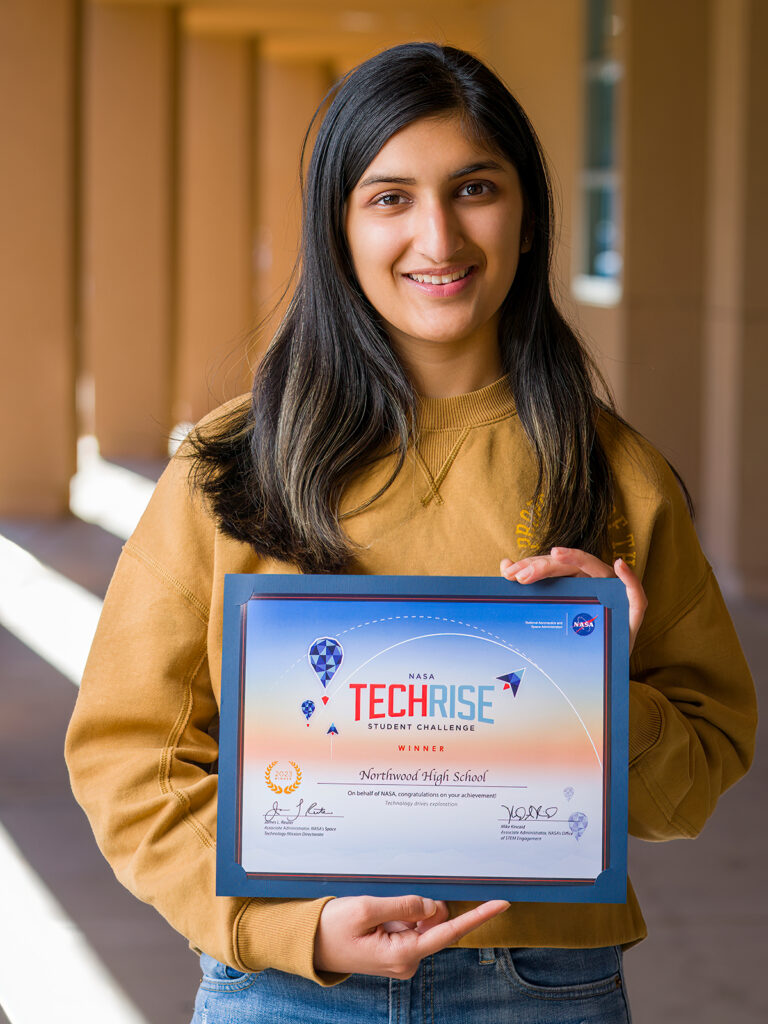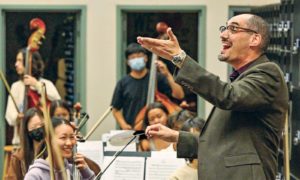
Sometime this summer, four Northwood High School sophomores will watch an experiment they designed fly into the stratosphere on a NASA balloon.
Leading the team is Riya Gupta, 16, who was given her first telescope at age 7. That was nine years ago, when she dreamed of being an astronaut, she explains, adding, “Today, I’m thinking more about launching rockets.”
That’s convenient, given that Gupta’s team was one of 60 winners of the NASA TechRise Student Challenge, run by Future Engineers, which will provide expert help for them to build and launch their research project.
“My friends and I are all super-passionate about science and research,” says Gupta, who organized her team after reading an email promoting the contest. Her website describes her as “insanely competitive,” saying she aims, among other things, to break the world record for the longest paper-airplane flight. Regarding the Future Engineers contest, she says, “This is my third challenge – and the first time I’ve won.”
The victorious teams, announced in January, each receive $1,500 to build their experiment, a flight box to contain it, technical support from experienced mentors, and an assigned spot on the high-altitude balloon.
Proposals included ideas involving space travel, botany and exoplanets. Gupta and her three teammates plan to test computer chips’ capacity to weather high levels of radiation in the stratosphere, comparing chips made with gallium nitride to more commonly used silicon chips. In other words, not exactly run-of-the-mill among 10th grade science projects.
Only after the students did the bulk of the work did they reach out to Northwood science teacher Gabrielle Camacho for support with the application, Camacho says. “I listened to their plan and thought it was just amazing,” she adds. “I’ve been so impressed by the students’ wonder and drive and willingness to learn and ask the really complex questions.”
Gupta, the daughter of a college science teacher and a computer scientist, dates her own interest in science to a visit with her parents to the California Science Center in Los Angeles when she was 7. She remembers seeing a picture of U.S. astronaut Sunita Williams, who continues to be her role model. In college, she says, “I would love to do something related to space, making science in space easier to do. Science has the potential to make everyone’s life better.”









